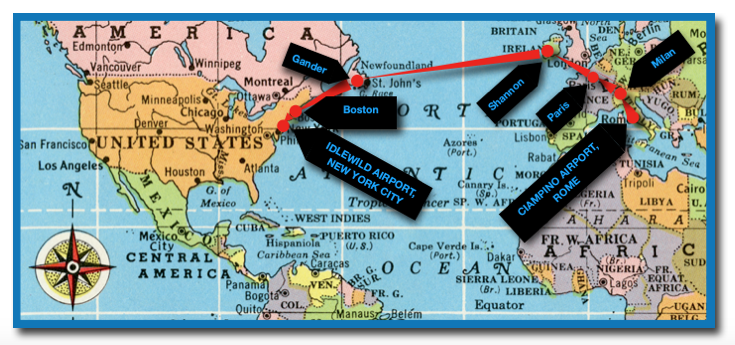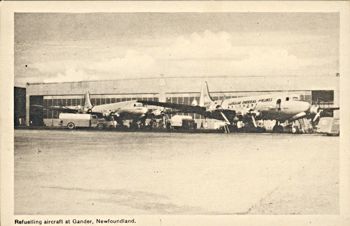Idlewild in sight — At flight’s end, safety eludes an Italian airliner (Part 1)
This web page is a work-in-progress. Please come back in a few weeks, unless I die before then...
Final approach
At the end of a long flight on Saturday afternoon, December 18, 1954, a Douglas DC-6B propeller airliner — a “propliner” — operated by Linee Aeree Italiane (or LAI, popularly known today as Alitalia), was nearing its final destination — Idlewild Airport (now John F. Kennedy Airport) in New York City. The aircraft, regisgtered as I-LINE and flying as LAI Flight 451, had departed Rome’s Ciampino Airport 22 1/2 hours earlier. On board were 10 air crew — pilots, co-pilots, engineers, radio operators, and stewardesses — and 22 passengers.


Descend and maintain seven thousand feet
xxx
At 11:22 a.m. Eastern Standard Time, Flight 451 reported to Idlewild Approach Control that it was crossing over the Mitchell Radio Range Station at 7,000 feet. Approach Control cleared the airliner to enter the Scotland holding pattern,1 approximately 15 miles miles (24 kilometres) southwest of the airport, from which it was subsequently "laddered down" to the number-one position to approach Idlewild.
The 10 crew and 22 passengers continuing on to New York City were no doubt relieved that their long journey was coming to an end, but it seemed they were in good hands: Linee Aeree Italiane had been flying the Rome-New York route since 1950, at first using war-surplus Douglas C-54s, then DC-6s, and since November, 1953, DC-6Bs. It was a blessing that no one on board Flight 451 could know the fate about to befall them.